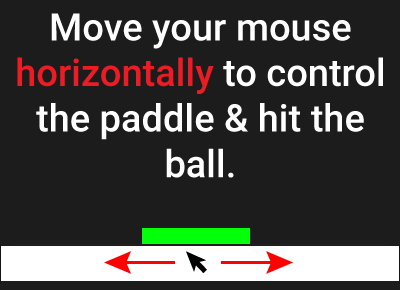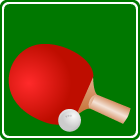


3 scores max per player; No foul language, show respect for other players, etc.
Name | Score | Date | ||
|---|---|---|---|---|
| 1 | ||||
| 2 | ||||
| 3 | ||||
| 4 | ||||
| 5 | ||||
| 6 | ||||
| 7 | ||||
| 8 | ||||
| 9 | ||||
| 10 |

Game: PONG
Aim: Break the bricks, score points
Method:
Use your mouse or tap in the white bar to move the paddle horizontally to bounce the ball up the screen. Answer questions when you break the white bricks, score big points with the yellow bricks.
Your final score is based on correct answers, bricks broken and time taken.

Eva 😔🫨🍍
"Turn clockwise"
PONG game to practice
'Grouped frequency table: modal group, range' for 8th grade
8th grade / Statistics / Continuous data / Continuous grouped data / Grouped frequency table: modal group, range
Grouped frequency tables: modal group, largest range
Continuous data can be represented in a "Grouped frequency table" where each class (group) covers the data points within a certain range, and the classes together cover the entire range of the data.
The benefit of grouped frequency tables becomes clear when there are so many raw data points that discrete values would become difficult to process. A limitation of continuous data is that individual data points are lost so that exact calculations of the mode or range of the original discrete data points becomes impossible. Instead techniques have been developed to approximate these values for continuous data.
Instead of a mode (the most frequent individual value in a data set), we can find the "modal group" which is the class of data that has the highest frequency. So if we have a grouped frequency table with classes 1-20, 21-40 and 41-60 that have frequencies of 12, 7 and 5 respectively, then the modal group is 1-20 because it has the highest frequency of 12.
Instead of an absolute value for the range of a data set, we can find the "largest range". This is the difference between the largest possible value in the biggest class and the smallest value in the smallest class. So if our grouped frequency table has classes 21-40, 41-60 and 61-80, then the largest range is 80 minus 21 which is 59.
In this topic you are asked to find either the modal group or the largest range for a series of grouped frequency tables. There are 8 question/answer pairs in the lessons, and an additional 8 question/answer pairs in all the games and tests.
With our Pong math game you will be practicing the topic "Grouped frequency table: modal group, range" from 8th grade / Statistics / Continuous data / Continuous data. The math in this game consists of 16 questions that ask you to identify the modal group or largest range for each grouped frequency table.

In our version of Pong/Breakout, there are 3 types of bricks for you to break: green bricks are worth just 2 points; yellow bricks are worth a whopping 50 points; breaking white bricks, which are worth 10 points, wins you a math question from the topic you have chosen.
You start with 5 lives. If the ball goes below the paddle, you lose a life and 200 points. The game ends when you answer all 10 questions or lose all your lives.
Notes
- This version of Pong is a one player game to learn or revise math
- Our PONG for math is a scoring game - play a few times and set a personal best score!
- Addictive! You may end up trying to avoid the white bricks so that you can play for longer...
UXO * Duck shoot * The frog flies * Pong * Cat and mouse * The beetle and the bee
Rock fall * Four in a row * Sow grow * Choose or lose * Mix and match

Latest leaderboard entries: Pong




How to play PONG to practice
'Grouped frequency table: modal group, range' for 8th grade

- Select the PONG game from the games selection page.
- On the settings page there are brief instructions on how to play.
- Click on PLAY to enter the game screen.
- The clock starts when the bell rings.
- Move your mouse (or finger tap or drag in the white bar for touch screens) to move your paddle left and right.
- Knock the ball back up the screen to break the bricks.
- You start with 1000 points and 5 lives.
- You lose 1 point every 2 seconds.
- 200 points are deducted from your score for each life lost
- Green bricks score 2 point, yellow bricks score 50 points, white bricks score 10 points and open the question screen.
- For each question click/tap on the correct answer or enter it using the keyboard.
- Wrong answers lose you 25 points but correct answers win you 50 points.
- Continue breaking bricks and answering questions until you have cleared all the question bricks.
- The game also ends if you lose all 5 of your lives.










